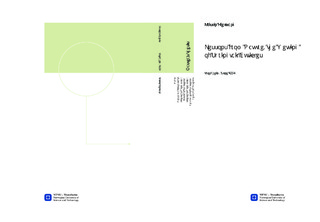| dc.description.abstract | Abstract Surfaces that display super-hydrophobic properties have numerous areas of application in the industry. Nature have trough millions of years of evolution developed structures and materials perfectly adapted to different species’ environment, and by learning from nature similar hydrophobic surfaces can be manufactures. The Collembolas, a small arthropod, have showed to possess a sophisticated nanoscaled, geometrical pattern of granules connected with ridges on their cuticle, their skin. These patterns make the surface structure roughened, which is by traditional wetting theory stated as the reason its of super-hydrophobic properties. In addition to a rough surface, the collembolans are said to have an overhang on the granules. These overhangs make the granule appear as a nano sized “mushroom”, and should provide a further resistance to wettability. This overhang has however not been documented by imaging, besides one image taken by Transmission Electron Microscopy. To confirm the overhang is an important part of this thesis, as well as a study of its relation to super-hydrophobic properties. To investigate the existence of the overhang, a Focused Ion Beam (FIB) was used together with Scanning Electron Microscopy (SEM). By utilizing properties provided by the FIB and its software, a survey of the granules on the cuticle was obtainable. There are in total seven different species distributed on eight samples was examined. Four out of eight samples proved to display an overhang, but by a comparison with measured values of hydrophobicity, no direct relationship between the degree of overhang displayed and the resistance to wetting was found. The overhang is very likely a factor contributing to hydrophobicity, but the collembolans are not depending on them to exhibit such properties. This fact is important to establish before an overhang is rewarded as the reason for the collembolans super-hydrophobic properties. | nb_NO |

